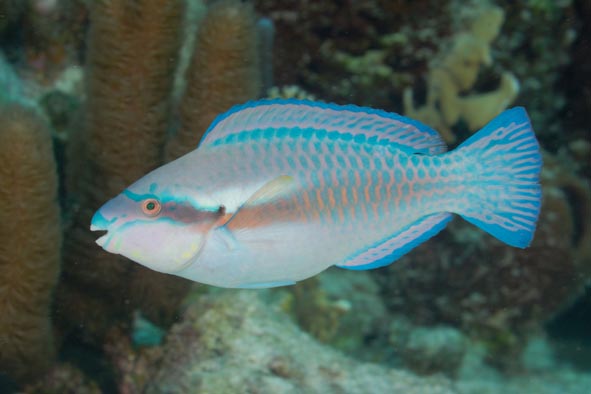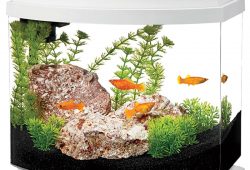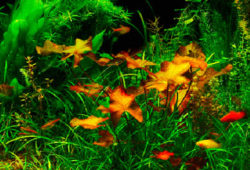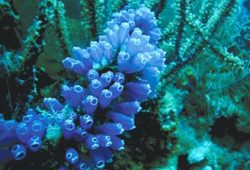Boycott the Princess Parrotfish
This article tells you about Boycott the Princess Parrotfish. While this fish is readily available to aquarists, its high captive mortality combined with its ecological function, make it a poor choice for the home aquarium.

As Bob Fenner, author of The Conscientious Marine Aquarist points out, “due to better collection, holding and shipping more [queen parrotfishes] arrive in good condition and live.” Unfortunately, he adds that, despite better collection, holding and shipping practices, “most are dead within a month of collection.”
For this reason, combined with expanding knowledge about the species’ role as a primary algae-grazer on degraded tropical reefs, conscientious aquarists ought to boycott the trade of this fish (and all other parrotfishes) until more is known about their functional role in the wild and their husbandry requirements in captivity.
Contents
Expanding Knowledge of Ecological Niche
Dr. Peter Mumby is a Professor of Coral Reef Ecology at the University of Exeter in the United Kingdom. Much of his research focuses on factors determining the resilience of coral reefs and generating tools for use in conservation planning. Mumby’s paper “Thresholds and the resilience of Caribbean coral reefs” (November 2007 issue of the journal Nature), presents, according to Mumby, the first concrete evidence that herbivorous fishes are essential to the health of coral and, in turn, the tropical reefs built by coral.
Leading Mumby’s list of herbivorous fishes most important to the resilience of coral reefs are the parrotfishes. “Herbivorous fish, chiefly parrotfish and surgeonfish, are the major herbivores on coral reefs,” explains Mumby in a spring 2008 interview with Blue Zoo Aquatics. “The diet of parrotfish and surgeonfish is mostly focused on fine algal turfs that provide a highly-productive and rapidly-replaced food source. A number of parrotfishes will also consume small amounts of live coral and, in some cases, significant amounts of fleshy macroalgae or seaweed.”
Prevention of Fishing Leads to Healthier Reefs
Not surprisingly, recent research has shown that removal of herbivorous fishes from reefs leads to prolific algae blooms. “In the Caribbean,” Mumby says, “we have shown that prevention of fishing—which mostly affects the largest fishes—can have a sufficiently large impact as to reduce the amount of seaweed in marine reserves.”
Algae blooms are a problem for tropical reefs because they prevent coral populations from thriving, and, in the case of degraded reefs, they prevent coral populations from recovering effectively. “Thus,” says Mumby, “it is important to maintain a surplus of herbivores in order to facilitate coral recovery after disturbance.”
Sustainability
Mumby is concerned that the wild capture of fishes for the marine aquarium trade is not based on maintaining sustainable populations of herbivorous fishes. “By sustainable,” Mumby says, “I don’t mean that the fishes are prevented from becoming locally-extinct; I mean sustainable from an ecosystem perspective.”
In order to understand what sustainability from an ecosystem perspective looks like, more research is needed. According to Mumby, “we need to know how much grazing, or herbivory, is needed in order to maintain a healthy reef and then ensure that sufficient grazing is carried out on the reef after fish are removed for food or the aquarium trade.”
Self-Regulation Through Boycott
Until that research is conducted (and better captive husbandry practices are established), it is best for marine aquarists to voluntarily self-regulate the aquarium industry by removing any demand for parrotfishes, and one of the best ways to accomplish this is a grassroots boycott.



